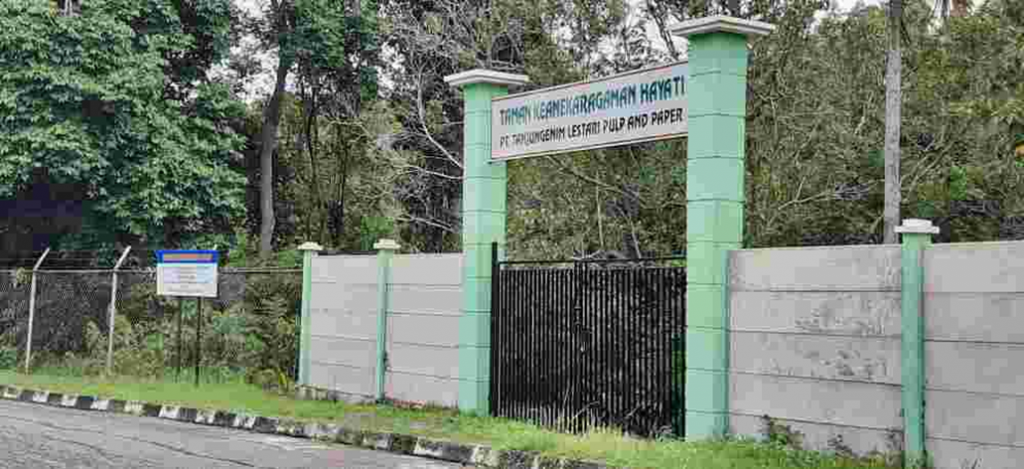
Biodiversity Identification Results
The preliminary biodiversity survey conducted by PT. Tanjungenim Lestari Pulp and Paper (TEL) in collaboration with an interdisciplinary team of experts from Sriwijaya University (UNSRI) was carried out in October 2022 within the Biodiversity Conservation Area of TEL, located in Desa Banuayu, Empat Petulai Dangku District, Muara Enim Regency, South Sumatra Province. This survey aimed to inventory and identified flora and fauna species as baseline data.
The flora diversity survey recorded 71 species, comprising 16 tree-level species, 21 pole-level species, 26 sapling-level species, and 52 seedling-level species. Among these, the species with the highest importance value at the tree and pole levels were Leban (Vitex pinnata); for saplings, Jeluak (Microcos tomentosa); and for seedlings/plants, Kari (Murraya koenigii). No flora species found in the area are protected or globally endangered.
The fauna survey results are as follows: 41 butterfly species with a Shannon diversity index (H’) of 3.45, including one species protected by Indonesian law, Raja Melayu (Troides amphrysus). 11 herpetofauna species with an H’ index of 2.20, including Biawak (Varanus salvator), listed in CITES Appendix II. Five fish species with an H’ index of 1.35. 39 bird species with an H’ index of 2.97, including two protected species: Elang-alap nipon (Accipiter gularis) and Paok (Pitta sp), one globally vulnerable species, Cucak Kuning (Rubigula dispar), and Serak Jawa (Tyto alba), listed in CITES Appendix II. Seven mammal species with an H’ index of 1.57, including one protected species, Lutung Kelabu (Trachypithecus cristatus), and two globally endangered species, Lutung and Long-tailed Macaque (Macaca fascicularis).
The diversity indices (H’) from the survey range from 1.57 to 3.45. The presence of species with high conservation value and the obtained diversity indices indicate that the TEL Biodiversity Conservation Area supports a robust biodiversity. Therefore, the existence of TEL’s Biodiversity Conservation Area should be preserved, and systematic conservation efforts are needed to support this goal.
The data show that the structure and composition of plants vary among species due to differences in characteristics at each vegetation level. Variation in plant structure and composition within a community is influenced by factors such as plant phenology, dispersal, and natality. The success of becoming a new individual depends on each species’ fertility and fecundity, resulting in differences in structure and composition. The flora diversity survey in the TEL Biodiversity Conservation Area recorded 16 tree-level species, 21 pole-level species, 26 sapling-level species, and 52 seedling-level species.
The Importance Value Index (INP) of each species reveals notable variation in the importance values of the 16 tree species found in the study area. Leban (Vitex pinnata) clearly dominates with an importance value of 96.25%, followed by Acacia (Acacia mangium) with 39.27, Jeluak (Microcos tomentosa) with 31.49, Sungkai (Peronema canescens), and Seru/Puspa with 27.65. Leban (Table 1, number 16) grows up to 2-15 meters in height and has a diameter at breast height that can exceed 40 cm. The bark is rough, scaly, and pale yellowish grey to brown; the inner bark is pale yellow, turning green when exposed, with a soft sapwood that is yellow to brown. Leaves are 3- or 5-foliolate. Leaflets are almost sessile, with two outer parts usually much smaller than the others, oval or elliptical, 3–25 cm long, and 1.5–10 cm wide; the base is rounded to slightly wedge-shaped, the tip is sharp, the margin is entire, and there are 10-20 pairs of secondary veins. The terminal panicle inflorescence has blueish-white flowers. The fruit is 5–8 mm in diameter, turning black when ripe. Leban usually grows in secondary forests, along riverbanks, and along roadsides, including in marginal lands. This species can tolerate frequent fires and is distributed across the Indo-Malaysian region, including Sumatra, Kalimantan, Sabah, Sarawak, and all provinces in Kalimantan. In Indonesia, it ranges north to India, Sri Lanka, and Cambodia (Sosef et al., 1998).
A. FLORA
Table 1. Types of pole-level plants and Important Value Index (INP)
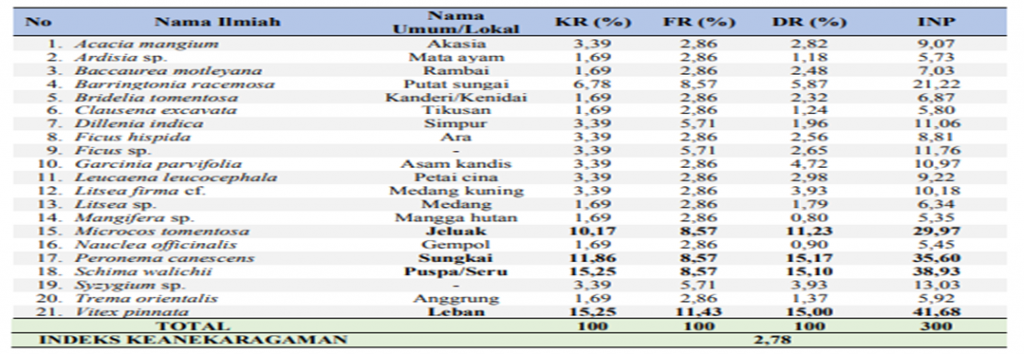
Table 2. Types of tree-level plants and Important Value Index (INP)
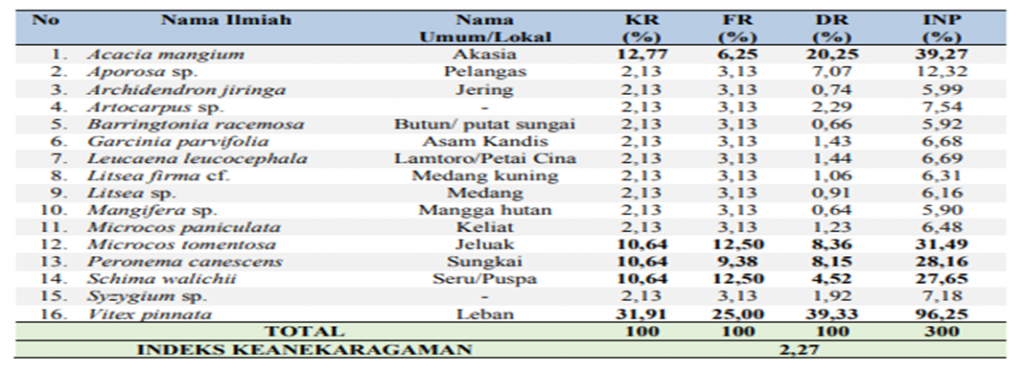
Table 3. Types of sapling-level plants and Important Value Index (INP)
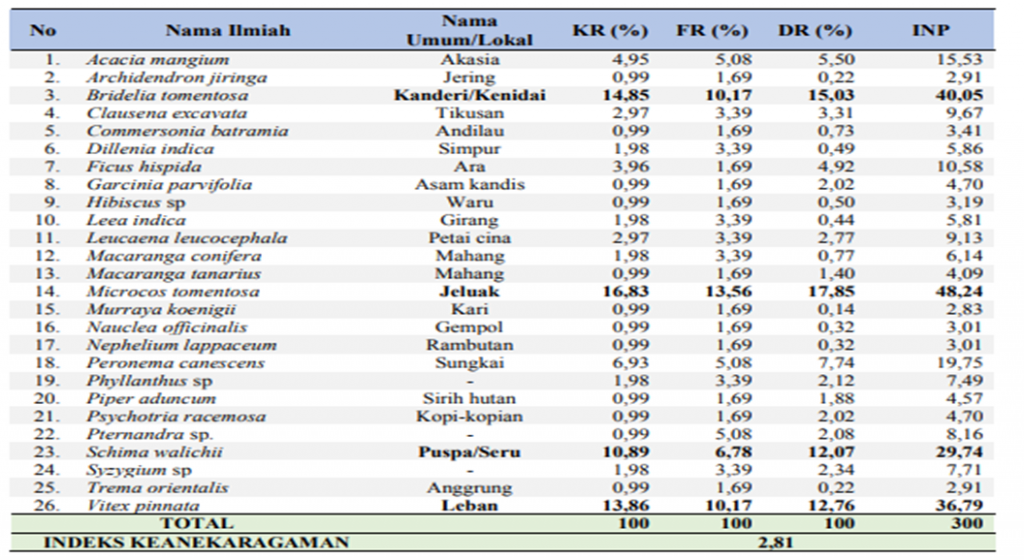
B. FAUNA
Table 4. Composition of species and conservation status of herpetofauna
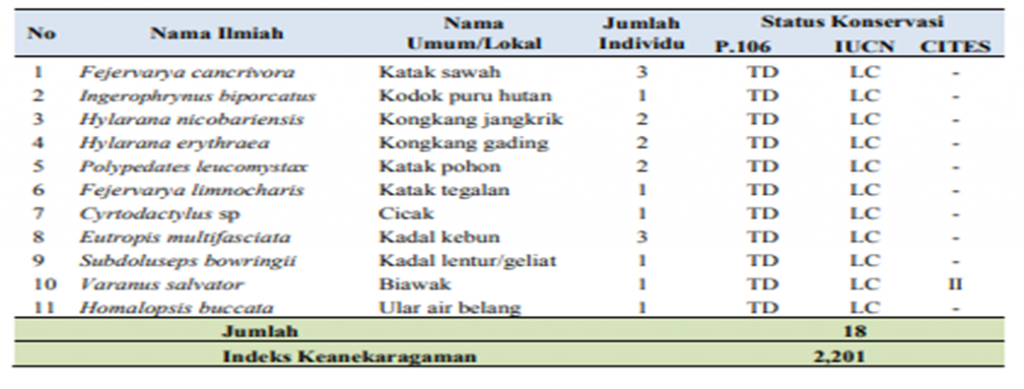
Table 5. Composition of species and Conservation Status of Pisces (Fish)

Table 6. Composition of species and conservation status of Birds (Aves)
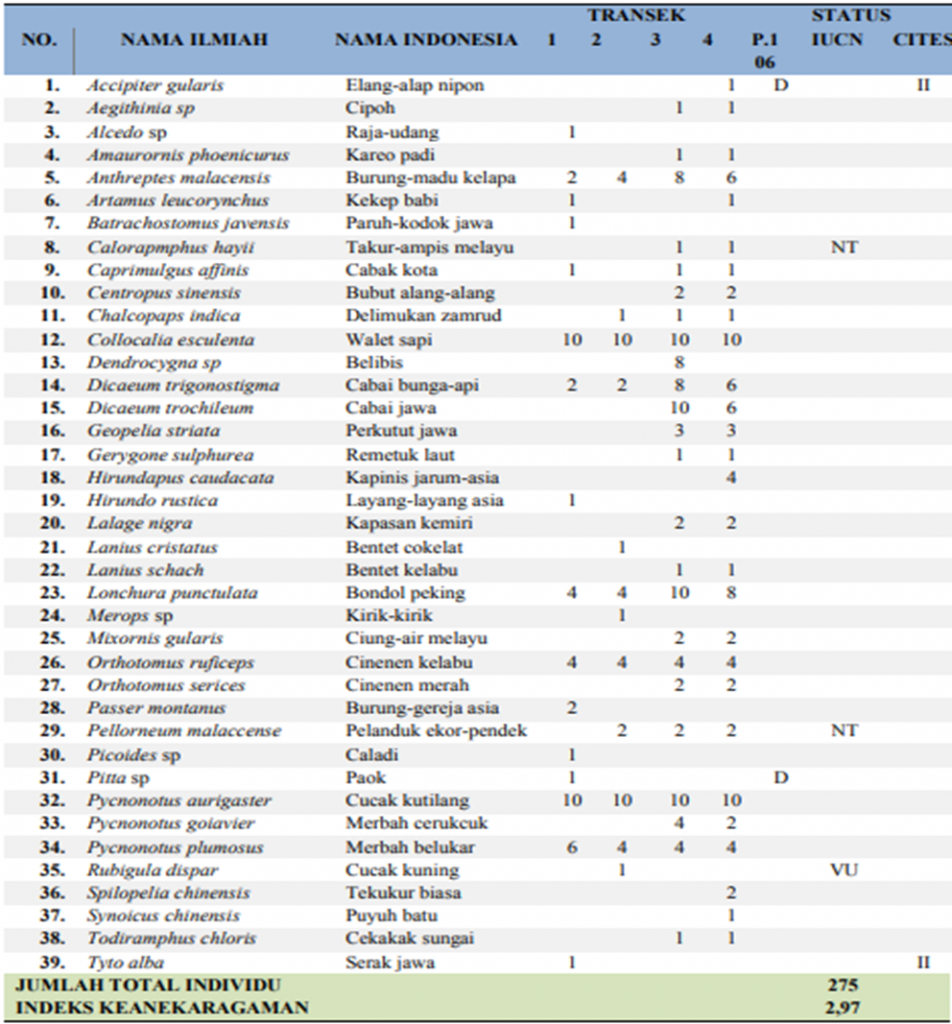
Table 7. Composition of Species and Conservation Status of Mammals

Table 8. Composition of species and conservation status of butterflies (Lepidoptera: Rholapocera)
